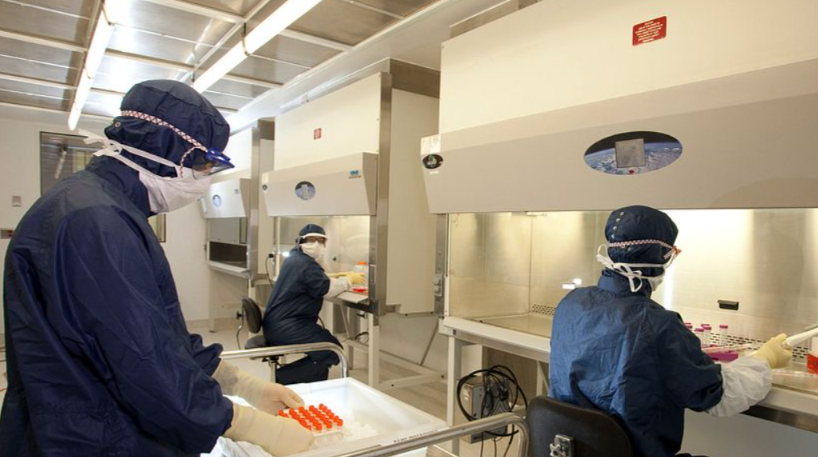How blaming microbial contamination on common root causes took precedence over comprehensive analysis
The first of a four-part series on contamination trends
Humans are the number one source of microbial contamination in the cleanroom. Have you heard this before?
A series of clean room investigations dragged on for years because a manufacturing site minimized the importance of personnel monitoring and water bioburden results that were above action level. The site also failed to connect the recovery of closely related species from In-process bioburden samples. As the root cause went untreated, in-process bioburden counts increased in frequency and severity. This led to a stop in production and continuous misapplied corrective actions.
We can learn from this mistake. For individual events, the site blamed common, generic root causes to close individual event records. A comprehensive analysis of the microorganisms observed could have solidified the full scope of the problem and returned the environment to a state of control faster.
“Humans are a source for microbes” – Facts! Microbial isolates recovered in manufacturing environments around the world are submitted to us for identification. Each year, the top five frequently occurring organisms (FOO’s) are consistently Micrococcus and Staphylcoccus species. These species are known to originate from human skin flora.
Inevitably, these organisms pop up during routine manufacturing (1). If the frequency or count of those recoveries reach a certain level, a root cause investigation is needed. For these human-source organisms, the investigation usually involves a few predictable steps:
• Clean the impacted area.
• Identify a process people are doing sub-optimally.
• Retrain personnel with the optimal procedure.
• Review the next few routine samples to ensure results are below response level.
For these investigations, the investigator confuses humans being the source, with humans being the root cause. Since these organisms come from humans, it’s presumed someone’s actions in the area must be the root cause.
Unfortunately, in my experience, I’ve seen that mentality bleed over into other environmental investigations. Even if the organisms are common water or soil organisms, investigations commence with the mentality that someone on the floor did something wrong for them to show up.
That mentality is insidious. It seems easy to avoid, but it seeps into so many investigations. It allows investigators to close their records to meet metrics. With crafty, short-sighted, risk assessments, the mentality allows site management to believe there is no underlying problem with their manufacturing process.
In this series of four posts, I want to discuss 4 separate contamination trends from the same facility. In each investigation, operators in the area were blamed first. This misplaced blame allowed ongoing environmental issues to continue, leading to contaminated product and costly remediation efforts.
Environmental Monitoring
I’m starting these case studies with surface environmental monitoring samples that had Micrococcus and Staphlyococcus recoveries. Yes – these organisms originated from humans. And no- humans were not the root cause.
Let’s understand this site and the environmental monitoring program a bit. The site manufactures four products in three distinct manufacturing areas. To get into the filling areas from the CNC space, you need to go through a couple stages of gowning.
First, all employees entering the area need to remove street clothes and don scrubs to enter the production staging area. Next, to enter the ISO 8 cleanrooms, employees don coveralls, gloves, hoods, and boots over their scrubs. There is some minimal skin exposed around the face, but overall, they are conservatively dressed for this ISO designation. All non-filling manufacturing activities take place in these ISO 8 rooms. All filling is performed in ISO 5 isolators.
Environmental monitoring (including viable surface, viable air, and non-viable particulates) is performed for each ISO 8 room. The rooms are broken down into grids. Individual grids were identified for routine monthly monitoring during the EMPQ based on risk.
This case study involves gown-in rooms going into the ISO 8 areas. In the 3 manufacturing areas there are 8 of these transition rooms. About every other month, over 2 years, one of these transitions rooms had an action level result on a surface monitoring sample. The organism was always Micrococcus or Staphylococcus.
In hindsight this is an obvious trend. At the time, no trend was identified because the room results were reviewed individually. No individual room had frequent enough hits in repeating grids to classify as a trend. The rotating species IDs obscured the trend as well.
Most of these individual investigations turned out the same way. Personnel were blamed for improper gowning technique in these rooms. Some investigations got creative and blamed the cleaning crews – if the organism was there, the cleaning crew must not have cleaned it correctly.
There was one irony here that didn’t go over well with the clean room designers. The areas were classified as ISO 8, but people were entering without ISO 8 gowning. If an EM hit happened in any other ISO 8 room and we knew people were not fully gowned, that would absolutely be the root cause. I got push back when I pointed to that as a root cause for these hits. These are transitional gown-in rooms. It’s expected operators will enter in scrubs. We can’t change that.
Either way, entire groups were re-trained on their gowning or cleaning practices. These organisms were never identified further into the ISO 8 area so the investigations were low priority. These conclusions were sufficient to close the record and be done with it . . . until another similar hit showed up a couple months later.
Read the full blog here.





